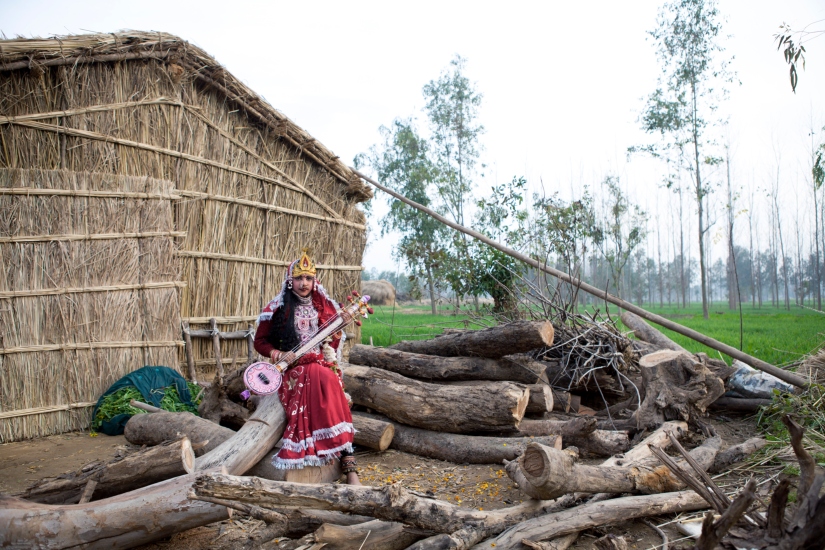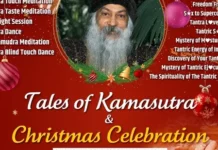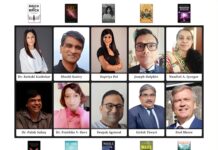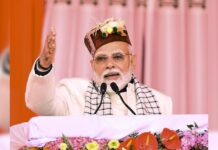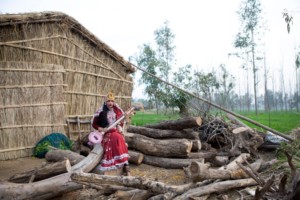 NEW DELHI: “Searching for Saraswati” director Amit Madhesiya says his documentary is a metaphor for the times we live in, where the government can spend Rs 50 crore in finding a mythical river at a time when existing ones are dying.
NEW DELHI: “Searching for Saraswati” director Amit Madhesiya says his documentary is a metaphor for the times we live in, where the government can spend Rs 50 crore in finding a mythical river at a time when existing ones are dying.
Successive governments, be it Congress or BJP, have been trying to find Saraswati, which is believed to have disappeared thousands of years ago, Madhesiya said, adding that he and his co-director Shirley Abraham were tracking the story for a while.
Their curiosity was piqued in 2015 when they read that the river was found in Mugalwali village of Haryana’s Yamunanagar district. Madhesiya said they had questions like “How do you find a river?” and “Why is a government trying to find a river that has been lost for some 5,000-8,000 years?”
The result is a much discussed 20-minute documentary, released by The New York Times on its Op-Docs section.
“This search for Saraswati is a metaphor for our times. We are trying to find these things that we can only imagine. We are trying to bring them to life to say that we are great, to say that Indians and Hindus are great. We should not have a problem in saying that but we should be making newer things,” Madhesiya told PTI in an interview.
Madhesiya and Abraham earlier partnered to make the multiple award-winning documentary “Cinema Travellers”, which was shown at Cannes.
There should, he added, be scientific progress and efforts to explore the frontiers of the universe. “There is so much to learn but instead of doing that we are trying to find rivers. What is the public utility of finding that river? How is it going to benefit people? These were the questions that we were trying to find an answer to,” Madhesiya said.
“Who goes to find a river when our existing rivers are dying?” he asked, clarifying that his film does not doubt people’s faith. But spending tax-payers’ money on a project like this defies logic, in his view.
It can be problematic to keep going with the earlier idea of how great the country was if we don’t invest in the future and instead present the older idea as the absolute truth, he said.
“If I want to think big or question something, you would say that it is wrong because our text does not say it or says it in a different manner,” Madhesiya said.
Villagers are not shown as just curious bystanders but actively participating in the narrative of “Searching for Saraswati”. A “Peepli Live” like situation is seen unfolding in the film with some villagers exchanging stories of the miraculous river water’s power to heal while others look for a scientific rationale.
“People in the villages are very aware. They know what it (the river’s discovery) can bring to them. They see a lot of benefit in calling it ‘Saraswati’ because the government is telling them that there will be a huge pilgrimage, which will generate business. It is a village somewhere and they do farming, which does not yield much. So they see a lot of value in going with the narrative of the government,” Madhesiya said.
At the end of the documentary, the project seems to have been abandoned by everyone, the crowd has disappeared, except for a lone farmer standing next to the well, which was believed by many to be the lost river. Still not ready to let go of his belief, he lies prostrate on the ground, urging the river goddess to appear.
“It was a respectful way of looking at his belief. Who are we to say that he is foolish? We don’t have the moral authority to say that. So I have to respect that man’s belief, at the same time engage in an intellectual conversation with him and that’s how we should engage in any debate. This is why we acknowledge that moment. This exists and we have no answer to this,” Madhesiya said. PTI
